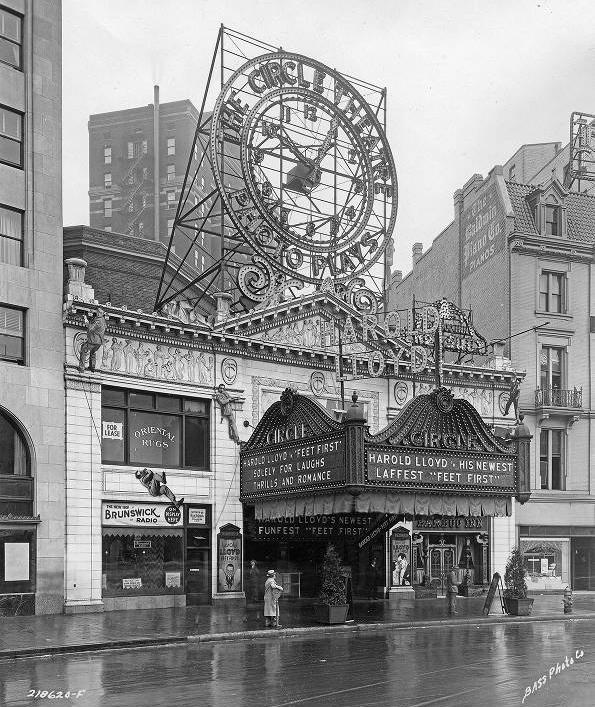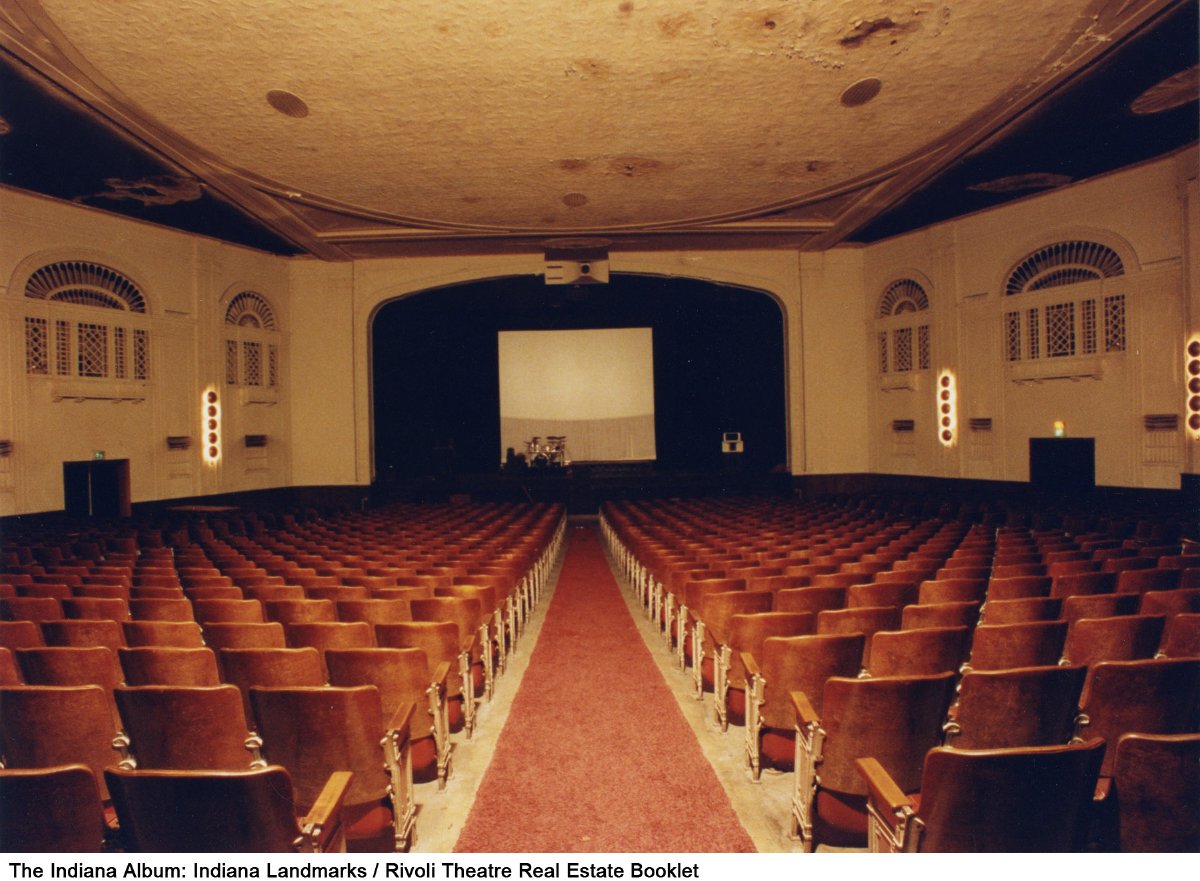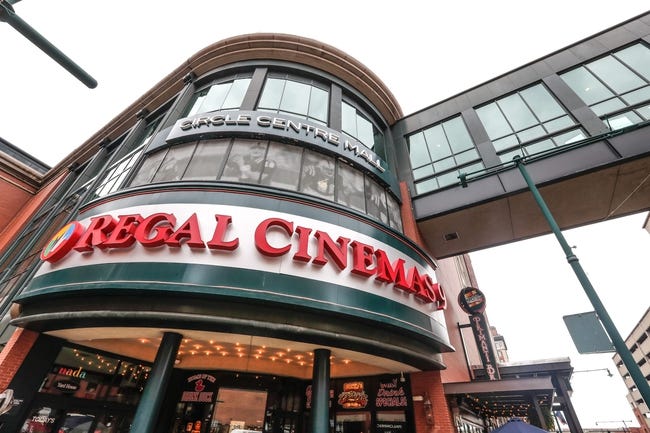According to some historians, the first movie theater in Indianapolis was the Bijou (ca. 1906) on East Washington Street. The Bijou showed Universal “short programs,” half-hour films viewed during lunch hour.

One of Indianapolis’ first theaters was Northstar (ca. 1913), located outside the Mile Square. Northstar was owned by Anzi Zaring who also owned Zaring Egyptian Theater (ca. 1925-1960s), reportedly one of the most beautiful theaters in the Midwest. Both theaters were located on Central Avenue.
In , Irving Theater opened on December 3, 1913, and initially showed little profit because adult residents wanted only educational films shown. Refurbished in 1987, the theater ran contemporary independent art and foreign films until closing in 1994. The theater reopened in December 2008 as an entertainment destination.
The Alhambra (ca. 1913), 44 West Washington Street, was the first Indianapolis theater built specifically for “movies only.” (Most theaters acted as multipurpose facilities, staging plays, vaudeville, and musical acts.) The Alhambra closed in 1921. Its Smith-Geneva organ was moved to the . The Apollo (15-17 N. Illinois Street), which became the first local theater wired for sound, opened on May 22, 1922. It closed in 1940. The Apollo building was demolished in 1990.
The first sound film, The Jazz Singer, played at the (opened August 1916) in 1928. Placed on the National Register of Historic Places in 1980, it is the home of the .
The Murat Theatre (1909) () showed the first real color film in 1911. In 1933, the Ohio Theater reportedly showed the first sound film containing a sex scene: The Seventh Commandment. The and Indiana Roof Ballroom (ca. 1927) held a demonstration of television in 1936. That same year the Indiana Theatre showed its first 3-D cartoon, and in 1953 the first 3-D movie.
Movie houses thrived until the 1950s when television and drive-in movies became popular. As a result, only 12 out of 50 local movie theaters remained in full operation. For a time, 3-D movies and wide screens helped attract audiences.

In 1965, seven new theaters or “hard-top drive-ins” ushered in a new era for the cinema business. Georgetown, Carlyle, and Regency cinemas, owned by Priority Theaters, featured adjustable, rocking seats, audience smoking areas, and lobbies with art gallery displays. General Cinemas opened theaters in Meadows Shopping Center and Glendale Mall. Glendale Cinemas I and II (ca. 1967) were the first local movie houses built adjacent to a shopping center. Vogue Theaters operated Nora Cinema (ca. 1973), as well as Vogue Cinema (ca. 1973) and Uptown (ca. 1926), which was once a major neighborhood theater. Prior to 1973, Vogue Cinema operated as Vogue Theater (1938). Located in the entertainment district, was transformed into a nightclub concert venue in 1977.
As larger, corporate-owned theaters sprang up throughout Indianapolis, neighborhood and downtown theaters closed or changed. Emerson Theater (previously Eastland, ca. 1927) showed alternative films during the 1980s. Once considered a leading movie house in Indianapolis, the Ritz (ca. 1927) changed names and operated as a live burlesque, then rock hall before closing in 1972. The Rivoli showed films from 1927 to 1966. It later staged various acts and became a rock hall, then an X-rated theater in 1976.

The Lyric opened in 1906 and was noted as the first local theater to play a stereophonic sound film, Fantasia in 1942. It closed in 1969. Loews Palace (originally Loews State in 1921) closed in 1970, one year before Loews Twin opened on North Keystone. Carmel Theatre (ca. 1949) struggled to remain in business after 1975 but closed in 1984. In 1985, the Eastwood Theater (38th Street and Pendleton Pike) operated as the only independent movie house in Indianapolis showing first-run films. It also had the largest screen in the state.
There were a variety of movie houses operating in Indianapolis by the 1990s. The city’s largest first-run, multiscreen complexes were General Cinema’s Clearwater Crossing 12 and Regal Cinema Village Park Plaza 12. Both opened in the summer of 1993 and each housed 12 screens. General Cinema, which had been in the area for 55 years, operated nine other local theaters. Village Park Plaza 12 marked Regal’s first theater built in Indiana. Loews operated five first-run, multiscreen theaters in Indianapolis. Cinemark Theatres operated Movies 8, Indianapolis’ two largest second-run, discount theaters, while CTS Theaters ran three smaller second-run theaters.

The 2000s brought a decline in ticket sales due to increased options for viewing movies at home with streaming services and high-quality televisions and stereo systems. Despite this decrease in sales, there were still 13 theaters across Indianapolis by 2020, though they sported reclining seats and increased dining options to compete with home viewing. The pandemic closed many theaters for a while, and attendance was down upon reopening in 2021. It is unclear what long-term prospects are given competition from an array of streaming services.
Only one drive-in theater remains in Indianapolis, Tibbs Drive-In.

Help improve this entry
Contribute information, offer corrections, suggest images.
You can also recommend new entries related to this topic.